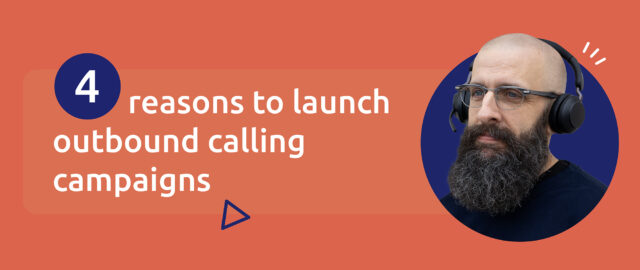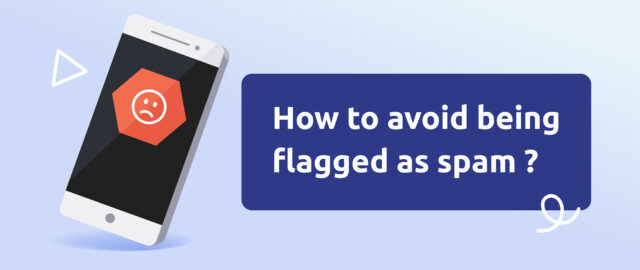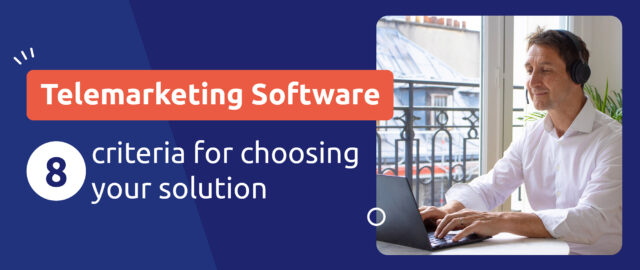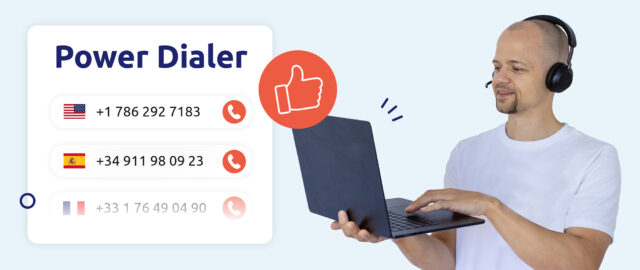Giving new meaning to outbound calling campaigns
For market players, this means moving from a decontextualized mass product – cold call campaigns – to a much more qualitative product: a process where calls are only made when the individual target has sent back a certain number of positive signals, enabling them to judge their interest in what is going to be offered.
It sounds a bit complicated, but in essence it’s nothing more than inbound marketing as it’s increasingly practiced in the B2B world.
Instead of cold call campaigns, typically based on a list of more or less qualified prospects, we take these contacts and offer them content. Access to each piece of content is an opportunity, via forms, to gather additional information on each contact and refine our knowledge of them.
If a contact doesn’t open any of the e-mails you’ve sent him, the probability that he’s interested in what you have to sell is low. There’s no point in calling them. On the other hand, a contact who opens all your communications and systematically downloads your content is unquestionably interested in what you have to sell, and becomes a prospect. So they’re more likely to be receptive to making an appointment.
Outbound calling campaigns are all more meaningful and valuable when :
- The caller already knows you, so it’s no longer a cold call;
- The information this person has given you along the way will enable you to talk not about your products/services/offers, but about their project and their needs.
Put an end to cold sales prospecting in B2C
It may be argued that these principles are more difficult to apply in B2C than in B2B, if only for reasons of volume and target size.
This certainly applies to pure acquisition outbound campaigns, which is exactly what the National Do Not Call Registry aims to limit. The strategy to circumvent cold calling involves “priming” the interaction with a preliminary letter or email. This approach helps in establishing an initial touchpoint, making subsequent calls less intrusive and potentially more welcome, as they follow a prior introduction or notification.
The advantages of e-mail are threefold:
- All e-mailing tools can tell you whether or not a message has been opened by the recipient, which immediately eliminates those who haven’t opened it from the call lists;
- The e-mail can, of course, link to a website, where the consumer’s path can be traced, making it possible to evaluate/score his interest and, depending on his score, to decide whether or not it is relevant to include him in the outgoing call campaign;
- Last but not least, the e-mail can offer the customer the option of being called back, by means of a checkbox for a later call, and/or a call-back button for an immediate call-back. In either case, the consumer explicitly consents to the call (opt-in logic) and won’t perceive it as an intrusion, since he or she is the requester.
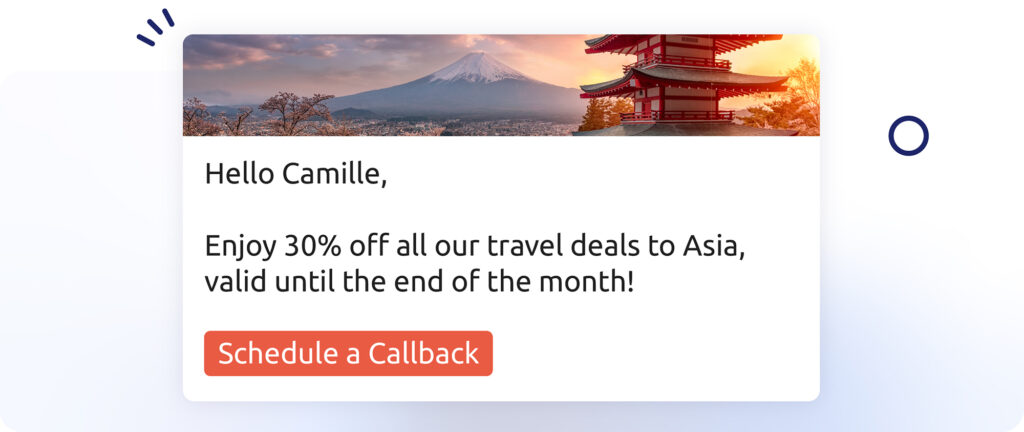
These priming techniques can considerably reduce the number of outgoing calls that are useless, unsuccessful or perceived as an aggression.
They give new meaning to outbound call campaigns and automatically increase the conversion rate – provided, of course, that the advisors/telemarketers have the skills, particularly the interpersonal skills, required to personalize their message and convince.
The challenge for outbound calling campaigns now lies in getting the contact list into a digital process as early as possible, where they can be traced, qualified, profiled and scored.
Another tip for improving the effectiveness of your outbound call campaigns: readjust your performance indicators. Interest scores enable you to segment your database more finely, and automatically generate relevant call or call-back lists, coupled with interview guides that are more effective because they are less generic.
Conducting a post-exchange satisfaction survey helps you improve your services. Think about it! Outbound call campaigns also serve to build customer loyalty, taking into account both positive and negative feedback. Take advantage of outbound calls to survey your contacts or follow-up on inactive customers.
Make the most of customer knowledge
If you browse through forums where consumers share their opinions on the National Do Not Call Registry, you’ll find that it’s not just the straightforward cold calling campaigns that frustrate them.
Calls exempt from the National Do Not Call Registry’s restrictions, such as those from a person’s own bank, telecom operator/internet service provider, health insurance, or energy supplier, are equally poorly received and enveloped in the same skepticism.
And rightly so, because the methods are exactly the same, and “customer quality”, which should enable us to personalize our approach and discourse, is not valued at all.
The problem with these outbound campaigns – whether up-sell, cross-sell or promotional offers – is that they’re not part of a relationship in the strict sense of the word, at least not in today’s sense of the word.
And this is often due to under-utilization of the potential of data to refine segmentations (and therefore call lists) and make outbound call campaigns more productive.
These companies all have an enormous amount of data on their customers/consumers, but how many actually use this data for prevention and/or loyalty purposes? For example, what energy or water supplier calls customers whose consumption has risen significantly over the previous year, even if only to point this out and try to understand why?
None, even though these situations are ideal opportunities to show customers that we care about them, and that we have solutions that can help them take better control of their consumption. Intelligent use of customer knowledge is one of the most powerful ways of breathing new life into your outbound call campaigns.
Here again, if the call is announced or offered via e-mail or SMS, the chances of it being successful are much greater than if it’s made as part of a generic campaign aimed specifically at promoting solutions for reducing water or energy consumption. An inactive customer can thus be more responsive to an unexpected incoming call. Tessi achieves a response rate of 70% on its SMS-announced call campaigns.

Furthermore, to avoid overflow in your call center, launch proactive outbound call campaigns to anticipate needs and therefore reduce the number of inbound calls.
Your customer service department will be less overwhelmed.
Digital gives outbound calling campaigns a new future
Fully automated strategies, such as outbound call campaigns based on recorded messages, only increase consumer distrust, and are therefore not necessarily solutions for the future. Automated call campaigns can only rhyme with personalization if the right approach is used.
The best way forward is to use digital technology to reintegrate outbound call campaigns into a relational process, and to make intelligent use of available customer knowledge so that the call once again becomes a key moment in the relationship: the moment – which, for obvious economic reasons, will be increasingly rare and therefore increasingly precious – when the human exchange takes place and the emotional takes over.
The tools needed to create this digital-telephony continuum have been around for a long time.
Today, they interface more easily than ever with the analysis tools that enable us to increase the relevance and added value of calls by better exploiting data. Mobilizing them together does not run counter to the industrial methods developed over decades by outbound campaign operators – quite the contrary!
It’s a way for these players to move upmarket, and thus continue to leverage their know-how and previous investments.
The development of artificial intelligence is also opening up numerous opportunities for better thought-out outbound call campaigns, combining targeting and automation. Voicebot, sentiment analysis, automatic promise detection, call transcription and summarization, predictive dialer: the software developed by Diabolocom today integrates a range of AI-based functionalities to help agents handle calls and post-call actions in a more efficient and personalized way.
We can help you set up outbound calling campaigns that meet both your company’s objectives and consumers’ expectations!
You might ask: how can we assert that outbound calling campaigns have a future when so many Americans have registered with the National Do Not Call Registry? It’s a valid concern.
Indeed, in just the first six months after its introduction, the National Do Not Call Registry saw millions of Americans signing up. Today, the list includes tens of millions of phone numbers, highlighting a significant aversion among Americans towards cold calling.
Yet, as counterintuitive as it may seem, this is precisely why the statement holds true.
The widespread registration for the National Do Not Call Registry signals clearly what consumers no longer want: to be constantly interrupted by unsolicited calls, especially those that offer no value. It’s this disregard for consumer preferences (and, frankly, the apparent lack of respect) that diminishes the impact of outbound calling campaigns.
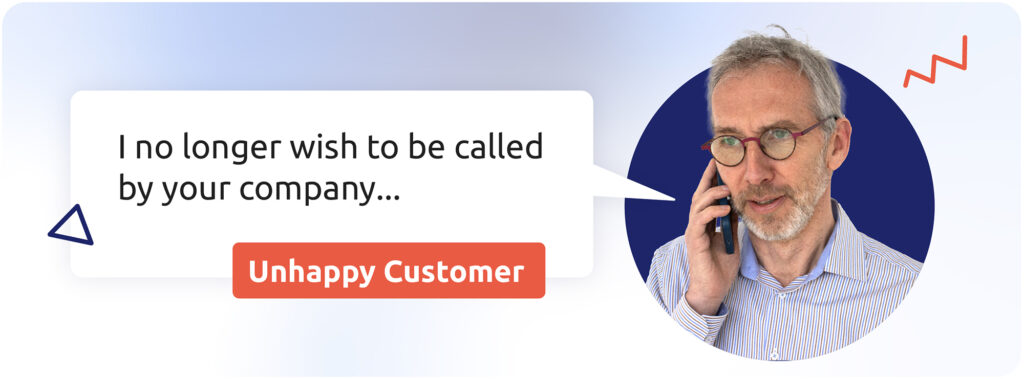
The players in the outbound call market – service providers and principals alike – need to take note of this rejection. Above all, they need to see that it points to the industry’s only real product of the future: intelligent outbound calling campaigns – that is, campaigns that are timely, consented to by the consumer, and add value for him or her because they are personalized.
Curious to know more about Diabolocom?
